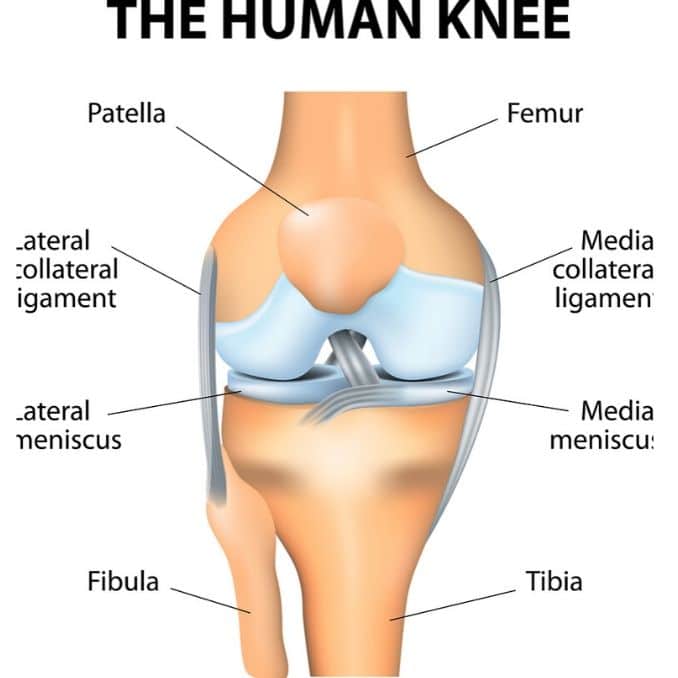Our knees have two C-shaped cartilages, referred to as meniscus/menisci. These pieces of cartilage act like a cushion between your shinbone and your thighbone. A torn meniscus causes pain, swelling, and stiffness. You may also experience limited knee motion and trouble extending your knee fully.
A torn meniscus is a tear in the cartilage of the knee. The meniscus can become damaged as a result of a sudden injury, such as a sports injury, or gradual wear and tear (osteoarthritis). Minor cartilage injuries may heal on their own within a few weeks, but more severe cartilage damage may eventually require surgery.
Twisting movements and squatting beyond 15 degrees should be avoided as these movements add more stress to the knees.
Most meniscal tears cannot heal because of their limited blood supply. However, quadriceps muscle strengthening exercises can help prevent some of the secondary effects of a torn meniscus, such as kneecap pain or the sense of buckling. Wearing an ace bandage, a knee sleeve, or brace may make the knee joint feel more secure. When going downstairs, make sure that you are holding a rail for safety precautions.
Whether your meniscus tear is due to a recent injury or a degenerative condition such as arthritis, be sure to note the following recommendations.

Do’s and Don’ts
Don’t rest too much. Too much rest can weaken your muscles, which can exacerbate joint pain. Explore some exercises that are safe for your knees and make sure that you stick with them. If you’re not sure which motions are safe or how much you can do, talk with your doctor or a physical therapist.
Do exercise. Cardio exercises, weight training, and stretching exercises strengthen the muscles that support your knees and increase their flexibility. Some good cardio choices include walking, swimming, water aerobics, stationary biking, and elliptical machines. Tai Chi and Yoga may also help decrease stiffness and improve balance.
Try these exercises to help strengthen your knees and their supporting structures:
https://exercisesforinjuries.com/5-safe-knee-strengthening-exercises-meniscus-tear/
Some other suggestions for treating your Meniscus Tear include:
Do the “RICE” method. Rest, Ice, Compression, and Elevation (RICE) are recommended for knee pain caused by a minor injury or an arthritis flare. Rest your knee, apply ice to alleviate pain, wear a compressive bandage to reduce swelling, and keep your knee elevated to promote blood circulation.
Don’t take your weight for granted. If you’re overweight, losing weight reduces the stress placed on your knees. You don’t have to achieve your “ideal” weight. Small changes still make a difference.
Do use a walking aid. A cane can help reduce the stress on your knee. Splints and braces can also provide more stability, especially during low-impact activities.
Don’t wear uncomfortable shoes. The best types of shoes for those with joint pain are athletic and running shoes. These shoes provide you and your joints with the best cushioning and support. Cushioned insoles can reduce stress on your knees.
Don’t jolt your knee joints. High-impact exercises can further injure painful knees. Avoid pounding exercises such as running, jumping, and kickboxing. Also, avoid doing exercises such as lunges and deep squats, as these put a lot of stress on your knees.
How to negotiate going up and downstairs:
When suffering from a torn meniscus, it is important to learn the correct techniques for negotiating steps. Using stairs after a knee injury can be especially scary, since the last thing you want to do is reinjure yourself and compromise your knee.
The saying, “put the right foot forward” takes on an entirely different meaning when you are recovering from a lower extremity injury. Despite what some may think, there is a “right” and “wrong” foot, and the foot that you lead with changes, depending on the direction you are moving. To help you remember which foot to lead with when going up and down the stairs, remember the phrase, “Up with the good; Down with the bad.”
You should lead with your stronger leg to walk up the stairs and lead with your weaker leg to descend.
Keep reminding yourself that you will get better. With proper care, most knee injuries heal well. Following your health professional’s advice will give you the greatest chance of a quick and full recovery.
For your comprehensive guide to healing your meniscus injury, check out the Meniscus Tear Solution, here!